






MDM CHUN WEE SAN PROGRAMME MANAGER (ART), STAR
What is documentation?
Effective art teaching entails documentation. According to Krechevesky, Mardell, Rivard and Wilson (2013), documentation is the “process of observing, recording, interpreting, and sharing through a variety of media the processes and products of learning in order to deepen and extend learning”. While documenting involves the translation of observations, actions and verbal responses into tangible learning artefacts, it is not merely a record of the daily classroom activities and events. Gathering the information is just a starting point, and it should extend beyond this; documentation is only meaningful when teachers take a step back to revisit these past experiences, and reflect upon them to inform future teaching (Krechevesky et al., 2013). It is the analysis and reflection that differentiates it from mere data collection.
How does documentation help teachers?
Documentation makes every student visible as it embraces the plurality of voices and multiplicity of perspectives that exist within a single classroom. It offers insights into students’ lives and allows teachers to better understand students’ world views, thoughts and feelings. “Documentation reveals to us not only what children are learning but also what teachers are learning about teaching” (Helm, Beneke, Steinheimer, 1998, p. 23). The data provides the basis for refinement of teaching strategies as teachers analyse and interpret the evidence of learning that
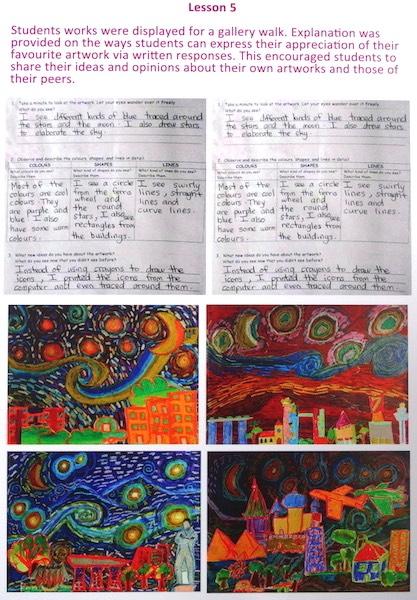
he/she has carefully collected. It is “not about finding answers, but generating questions” (Filippini as cited in Turner & Wilson, 2010, p. 9). For instance, as a teacher reviews a video recording of his lesson, he may ask questions such as “How do I make sense of what I am seeing and hearing?”, “What and how have the students learnt?”, “What changes have I noticed in the class response?”, “How would I teach differently?” Furthermore, when documentation is shared and discussed, it creates the space for teachers to engage in collaborative inquiry about teaching and learning. Examining shared work collectively allows teachers to ask questions, clarify assumptions, give/ receive feedback, and explore new ideas to deepen the understanding about their work (Given, Kuh, Leekeenan, Mardell, Redditt, & Twombly, 2009). Documentation can be a powerful resource that contributes to building a culture of learning and inquiry that is suited for individual school contexts.
purposeful, teachers need to consider: What do I aim to understand through documentation? What kinds of learning behaviours do I want to observe and capture? How will these documented moments of learning be used to support teaching and learning? For whom is this documentation for?
With clear aims in mind, the collection of documentation becomes more intentional and focused (Krechevesky et al., 2013), and it can better serve the purpose of advancing learning over time. As evidence of thinking and learning manifest in various forms, there can also be many ways of documenting. It is crucial to be selective though, so that one does not become overwhelmed by the loads of information gathered.
Documentation typically includes the following:
1. Students’ works (individual work, work by same student over time, developmental preparatory studies, finished product, works by different students for single assignment)
How does documentation support student learning?
Tiziana Filippini aptly described, documentation is not merely a technical tool, it is “an attitude towards teaching and learning” (as cited in Turner & Wilson, 2010). It is about building a learning community that honours individual voices and collaborative inquiry. By capturing students’ learning and making them visible, it allows students to build on what others know and discover new ways of knowing and learning, promoting the coconstruction of knowledge amongst students. Conversation involving learning artefacts also serves to bridge the gap between teachers and students, enabling each to see learning through the other person’s perspective. As Rinaldi (2006) wrote, “Thanks to documentation the child also becomes aware about the teacher’s perspective I see what you see about my doing, my thinking” (p. 196).
What should we document?
Documentation can include both the process and products; the contents of documentation depend on the purposes these records serve. For documentation to be
2. Teachers’ unit/lesson plans, Scheme of Work (SOW), project plan, assignment/ test/exam questions, assessment instrument (rubrics, marking scheme, checklist, observation list)
3. Reflection journals
4. Photos and audio/video-recording of students and teachers in action
5. Transcripts of interviews/dialogue with students and teachers
6. Written notes of class observations
7. Peer observation field notes
How can we use documentation?
1. To enable students and teachers to see the multiple viewpoints and build on each other’s ideas by making thinking visible
2. To inform teacher instruction and planning for future lessons
3. To facilitate reflection and self-evaluation
To be used as materials for formative assessment
5. To provide resources for group discussion, peer learning and collaborative work
6. To validate and affirm student work
7. To emphasise the importance of process, linking prior learning to new experiences and information
8. To monitor progress of student learning by tracking development at various stages


9. To illustrate how learning and thinking evolves over time, for assessing growth
References
Given, H., Kuh, L., Leekeenan, D., Mardell, B., Redditt, S., & Twombly, S. (2009). Changing school culture: Using documentation to support collaborative inquiry. Theory Into Practice,49(1), 36-46.
Helm, J., Beneke, S., & Steinheimer, K. (1998). Windows on learning: Documenting young children's work. New York: Teachers College Press.
Rinaldi, C. (2006). In dialogue with Reggio Emilia: Listening, researching and learning. New York: Routledge.
Ritchhart, R., & Church, M. (2011). Making Thinking Visible: How to Promote Engagement, Understanding, and Independence for All Learners. San Francisco, CA: Jossey-Bass.
Turner, T., & Wilson, D. (2009). Reflections on documentation: A discussion with thought leaders from Reggio Emilia. Theory into Practice, 49(1), 5-13.
The Value of Self Reflection
Video can be a powerful tool for documentation, read more about how teachers can improve their teaching practice by watching themselves teach: http://www.gse.harvard.edu/news/uk/14/10/valueself-reflection
Evidence of teacher learning through reflection
Photo credit: Mr Rahmat Bin Muhammad, Canberra Pri Sch


Documentation of students at work
Photo credit: Miss Chua Lee Beng, St Anthony’s Canossian Pri Sch
Protocols are processes that help to structure conversations that collaboratively review student and teacher work.

Steps taken to plan for a meaningful professional discussion:
• Establish goals and craft Framing Questions
• Choosing, adapting or developing a protocol, estimate the time required after selecting the artefacts to present
• Creating an agenda for the discussion/meeting and communicate with others
• Reflecting on, revising the goals and the protocols
Focusing questions
Clarifying questions
Probing questions
Qualities of good focusing questions
Importance
Relevance
Close connection to student learning
References
Allen, D., & Blythe, T. (2004). The facilitator’s book of questions: Tools for looking together at student and teacher work. New York: Teachers College Press.
Blythe, T., Allen, D., & Powell, B. (2008). Looking together at student work (2nd Ed.). New York: Teachers College Press.
Easton, L. (2009). Protocols for professional learning. Alexandria, Va.: Association for Supervision and Curriculum Development.
How can we examine documentation with our students/colleagues and engage in collaborative, constructive conversations? Ladder of Feedback, a protocol developed by Daniel Wilson (Wilson et al., 2005), structures feedback in four steps. It begins with the presentation of artefacts, after which participants will move through the discussion from one rung of the ladder to the next. This protocol can also be used to help students/teachers give specific and constructive feedback to their peers.
Ask clarifying questions to check your understanding or gather more information. Reserve judgment and withhold criticism.
Example: Questions such as “What is the duration of the entire module?”, “What is the class size?”, “How much time are the students given to complete the assignment?”, “Just to clarify, the intent of this lesson is for students to acquire skills of X?”, “Is this work done by an individual or group?”
Step
Identify areas which are praiseworthy, comment on the strengths, highlight practices which inspire or excite you, give acknowledgement for ideas that resonate with you, express appreciation for good ideas. Be as specific as possible.
Step
Raise your concerns in a constructive and non-threatening manner, avoid personal attacks, focus on the work and ideas. Example: “A concern that comes to my mind is…”, “This point makes me wonder…”, “It reminds me of…”, “Have you considered...”, “What worries me about this is...”
Step 4: Suggest
Offer feedback for improvement, provide alternative solutions or contribute suggestions to advance the ideas further. Example: “Another possible way is ”, “What if we try this?”, “How about using this method?”, “It might be interesting to combine this with that ”, “You might want to explore this area in depth ”
Adapted from: Visible Thinking, Harvard Project Zero
(Duration: about 1 hour)
Step 1: Introduction (selves, steps, agenda, ground/house rules)
• Set context, describe the teaching/learning situation while participants listen and take notes.
• Share materials of student/teacher work. Make sure adequate time is given to examine the materials.
• Presenter poses 1-2 framing questions [KEY QUESTION(S)] about the teaching/ learning situation.
• Participants ask non-judgmental questions about what is shared.
• Facilitator/participants may rephrase questions, or probe for common understanding.
• Presenters take short notes/or participants could be asked to write their questions on Post-it slips, and these are displayed for the rest to read.
Step 4: Individual Writing
• Both presenter and participants pen their thoughts, addressing the KEY QUESTION(S).
• This could also take the form of a group “silent discussion”, or visually scribing everyone’s thoughts using a concept map on a large piece of paper.
Step 5: Discussion
• Participants discuss issues raised during the presentation among themselves, striving to deepen their understanding of the situation and seeking answers to the question(s) posed by the presenter.
• A balance of Warm and Cool feedback could be given. Warm feedback tells the presenter what should be kept, or how something could be further enhanced. Cool feedback by contrast, is a statement of wonder (e.g. I wonder what would happen if ...) Cool feedback is not negative; “it is cool not cruel”.
• Presenter is silent, and takes notes on what the participants say.
Step 6: Presenter Reflection (reflects out loud, summarises rich discussion, talks about own learning, future action, dilemmas or misconceptions)
Step 7: Debriefing (comment on experience and process, thank facilitator and participants)
Duration: about 1 hour 15 min
Step 1: Introduction (selves, steps, agenda, ground/house rules)
Step 2: Examining the work
• Show, not tell. Participants silently examine and take notes.
Step 3: Describing the Work
• Facilitator asks the group for non-judgemental descriptions of the work: “what do you see? what’s there? what’s not there?”
• Facilitator prompts participants to rephrase where necessary.
Step 4: Raising Questions
• Facilitator asks for non-judgemental questions from participants using questions such as: “what came to your mind? what did you notice? what struck you? what questions do these raise?”
• Participants respond with contextual questions.
• Facilitator records and organises these questions.
Step 5: Speculation
• Participants speculate what the artistic intent behind the work or process could be; the inspiration/source/artist reference; what the student might be like; the context in which the work is made; raise possible problems faced, and suggest possible solutions to issues and challenges.
• Facilitator records these information.
Step 6: Presenter Reflection (provides contextual information; gives a perspective relating to the work/student; addresses questions asked where deemed necessary).
• Facilitator invites everyone to address implications of the work and the analysis, e.g. what have we learnt by examining this work that can help us in our teaching?
• Participants discuss their own teaching, how people learn, or how the student whose work was looked at can be supported in the future (i.e. follow-ups).
Step 8: Debriefing (Facilitator invites whole group to comment on the experience; thanks presenter and participants)

Building a vibrant culture of thinking starts with the teacher role-modelling “making their thinking visible”. Use this thinking routine to reflect on how you have been making your thinking accessible to your students, and how you have set aside the time and space to encourage visible thinking in your classrooms.
A routine to help teachers prepare and reflect on making thinking visible.
ME How do I make my own thinking visible?
YOU How do I make my students’ thinking visible?
SPACE How is space in the classroom organized to help facilitate thinking?
TIME How do I give thinking time? How does thinking develop over time?
Pedagogical exhibitions give visibility to student learning and teacher thinking. They deprivatise teaching practices and invite other fellow teachers into the shared space to reflect and engage in collaborative conversations about teaching and learning. They could also serve as a springboard for further inquiry, leading to more exploration and investigation, and eventually deepen our understanding of the work we do. With a focus on the process, pedagogical documentation records the instructional strategies, explains the rationale for teaching approaches, and foregrounds teacher reflection, bringing the private reflective practice into the public domain. It also highlights the value of both finished and exploratory works done by students, seeing them as platforms to gain insights into how students learn. When used well, these exhibitions can be a rich source of learning for teachers.
In this issue, STAR POST features two pedagogical exhibits by our STAR Champions: Mdm Faridah Hajarmustika, Maris Stella High School (Primary) and Mrs Jess Low, Haig Girls’ School
Do also visit the online pedagogical exhibition put up by 48 art teachers-leaders in 2013 and learn more about pedagogical exhibition in “Making Good Art Teaching Visible” by Ms Grace Kwa and Mr Lim Kok Boon.
• How am I (Me) making my own thinking visible for students? How and when do I display the habits of mind and thinking dispositions I want students to develop?
• How is the thinking of students (You) made visible to me and the rest of the class? When and where do students share their thinking? Do I have a sense that I know what students’ thinking is on our current topic of study? Am I able to see their thinking develop? How can I get more access to this thinking? As a class, do we examine and discuss the thinking of others?
• How is thinking displayed in the physical setting of my classroom (Space)? Could a visitor to my classroom see students’ thinking? What artefacts of thinking do I put up on the wall? What records of thinking do I keep? Who has access to these records? Are the ideas and issues we are exploring and our efforts at developing understanding on display in the classroom? How can I use the space to make my thinking and that of students visible for examination, discussion, and reflection?
• What are the opportunities for thinking in my classroom (Time)? How much time do students really spend in meaningful thought around the issues and topics we are exploring? Are homework assignments and classwork infused with opportunities for thinking? How can I increase their thoughtfulness?
Source: Making Learning Visible
AN INTENTIONAL BUILD-UP OF A LESSON UNIT FOR PRIMARY 5 STUDENTS OVER 6 WEEKS.
A lesson unit that explores watercolour painting techniques and composition of a collage that depicts a pupil’s personal perspective of Singapore’s unique identity.
Big idea:
• Artists make important decisions in their art to express their ideas.
Elegant art task:
• Create a collage using watercolour techniques that depicts Singapore’s unique identity from your perspective.
Enabling constraints:
• Medium: Watercolour paints
• Expression: Pupil’s perspective of Singapore’s unique identity
Lesson Objectives:
• Pupils will learn watercolour painting techniques and explore using watercolour paints to create tones.
• Pupils will learn ways to compose an image.
• Pupils will consolidate these watercolour and composition explorations to create a meaningful collage.
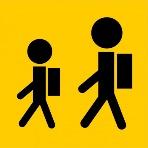

Creating a conducive arts learning environment
When guiding student inquiry through questioning strategies, I find it crucial to ensure that I give ample wait time, give all students opportunity to respond and create an environment where students feel safe to respond to and ask questions.
A: Inspiration from other artworks
As an introduction, pupils were introduced to a storybook cover illustrated in watercolour painting in an art discussion using the Formal Analysis questioning strategy. Drawing inspiration from the artwork discussed, pupils were engaged in an outdoor painting session of a scenic park within sight of the school compound.

Formal Analysis:

Relate
•What does this artwork remind you of?
•Do you recognise the place as a part of Singapore?
Describe
•Describe what is happening in the work.
Analyse
•How do you think the artwork is made?
•What made you decide that?
Interpret
•What is the artist trying to portray?
Evaluate
•What do you think is worth remembering about the artwork?
In this lesson, pupils were introduced to the basic techniques of watercolour painting which are wet-on-wet, wet-on-dry and lifting paint through a teacher-demonstration. In pairs, pupils were then given time to explore the techniques through a copy-painting activity inspired by a visual stimulus entitled Paris by Alena Romanova.

After the exploration of techniques, pupils reflected upon the following questions:
• What have you discovered about this medium?
• What have you discovered about this watercolour painting techniques?


The apt choice of a visual stimulus, in this case, an abstract watercolour painting encourages students to be more expressive and playful with the medium.
The visual stimulus also allowed me to facilitate a reflection session that draws upon the students’ own experiences with painting in watercolour just the week before. One of the questions that I posed to the students was, “What are the possible techniques applied in this artwork?” A discussion ensued with students sharing what they know about how certain effects were achieved and questions were raised about some effects that may have been accidental.
I also engaged students to articulate their answers by constantly pushing them to respond by drawing evidence from the picture. For instance, “When you said wet-on-wet, what do you mean by that?” or “Explain how she manage to get the tones in the background?” This helped students to rationalise and articulate their actions and techniques. I would also reiterate and paraphrase students’ responses by using art vocabulary associated with watercolour painting. Hence, students also began to use the same vocabulary when they responded to the questions.
• What is something you need to find out to improve the technique to create the tones?



Pupils’ works and reflection from copy-painting activity


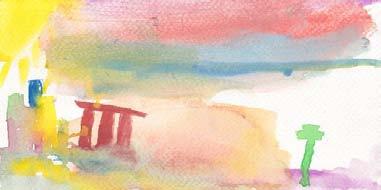



To discuss composition ideas in images, groups were challenged to list as many ways the following artworks are similar and different in an observation exercise.


Setting the focus of discussion to create the ‘flow’ and momentum of learning built


During this discussion, I did not delve deeper on the topic of composition even though it was a major objective in my lesson plan. I could have scoped the ‘compare & contrast’ exercise to direct students’ attention to the composition style of the two artists. The other missed opportunity was having the students to identify the collage technique that the artist adopted. For instance, students could have been asked to think about the effects of layering different elements to create the collage work.
I have learnt that where necessary, revisit the artworks and discussion in the following lesson to ensure that the momentum of learning is built upon appropriately.

Checking for understanding using a visible thinking routine:
To check for pupils’ understanding at the end of the lesson on composing images, pupils completed an exit ticket, a quick formative assessment strategy based on the following questions:
1. What did I do?
2. How did I do?
3. What did I learn?
The question ‘How did I do?’ is intentionally phrased to allow pupils to respond in the following interpretations:


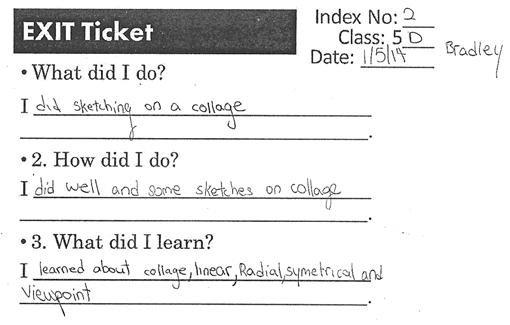

How did I do?
Pupils assess or evaluate how they have done their artwork.
How did I do?
Pupils describe how they did their artwork.

A: Inquiry into Making – Elegant Art Task
ART TASK: Create a collage using watercolour techniques that depicts Singapore’s unique identity from your perspective.
Pupils began to work on their elegant art task in pairs. ‘From your perspective’ would require them to think about Singapore’s uniqueness from their own interpretations or experiences rather than portraying the stereotypes.

Providing choices and empowering students to make decisions in the arts processes
There were some common characteristics of their artworks observed and shared among the groups as pupils constructed their collages. For example, when one group arranged their subjects standing on the surface, creating a 3D collage, a few other groups tapped on the idea and explored their own version of mixing a 2D and 3D relief in one work. Some groups chose to outline their paintings with markers and some do not, as pupils observed one another’s outcomes of exploration and then made a decision for their own works. The collaborative environment setting allows pupils to construct a common knowledge, and collaboratively made decisions and choices.


A: Compass Point [Reflection-on-action]
Upon finishing their task, all the artworks were displayed and pupils reflected upon their art making processes.
1. Look at your final artwork, what are some of its strengths?
2. What is one thing about your work of which you are not too happy with?
3. How can you improve on this work? What else do you think you need to know or be better at in order to make this improvement?
Pupils made progress in their ability to articulate what they have learnt in the watercolour techniques (reflection-in-action) but pupils need more confidence in articulating their artwork expression (reflection-on-action).
To facilitate pupils’ artworks discussion more constructively and creatively, I’ve learnt that I can use a Chart Talk, a generic reflection template that builds pupils’ learning with one another’s input. The charts will be switched from one group to another to allow other pupils to build on one another’s reflections on the artworks displayed in each group. Pupils could then move on to an individual reflection of their own artwork after the earlier round of Chart Talk.
In terms of assessing the Big idea, I have to be more aware and could have considered crafting an art task that supports the Big idea to assess their understanding.
Overall the lesson was successful such that pupils were able to apply appropriate constrains in the size of the collage work and the use of watercolour techniques. The lesson unit also allowed pupils to give their own input in composition beside conforming to teacher’s requirements set in the art task.





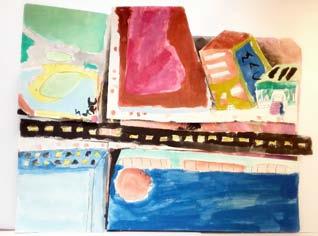


"Put your hand into the Mystery Box and describe how the object feels like for your friends to guess what the item is "
Mrs
Jess Low
Haig Girls’ School

As a prelude to this three-unit lesson package, students get to heighten their senses by feeling textures and describing them. From this simple activity, words like ‘furry’, ‘smooth’ and ‘rough’ were elicited from them to let them have a sense of what the lesson is about. Following that, they were encouraged to make careful observations and thoughtful interpretations through the use of Harvard Project Zero's thinking routine, See/Think/Wonder. A digital artwork ‘Mother Nature’ was carefully selected as a stimulus for students to identify the types of textures that can be seen in the artwork and make justifications to the artist’s choice of textures.



• Ample time to make careful observations
• Clear view of image (Coloured printouts were provided in this lesson)
• Interesting choice of image, with some ambiguity to encourage multiple perspectives and different levels of interpretations
What do you SEE?
Describe the woman in the picture. "Her body is made out of wood and she has mushrooms on her."/ “She has wrinkles.”
Describe the textures that you see. Describe the colours and lines that you see.
What do you THINK?
Who do you think the woman is supposed to be?
"I think she is Mother Nature because she is very old and there are many things growing on her that are still alive and she looks like a relic."
What do you think the artist is trying to say?
How do you feel when you see this picture?
What do you WONDER about?
Is Mother Nature real? How did the artist create this picture? Is the person male or female?

To allow students to see the differences between actual textures (textures that you can feel) and visual textures (illusion of having physical textures), they were asked to compare the textures on the digital artwork and the objects in the Mystery Box.
"I can feel this (the textures in the Mystery Box) but I cannot feel the other one (the textures in Mother Nature)."
The comparison between the two types of textures was made clearer when students went on a Texture Walk in the Science Garden to search for actual textures that intrigue them and document them through the use of iPads to snap photos, as well as do texture rubbings.
Besides the ‘Mother Nature’ digital artwork, students were also exposed to Eric Carle's illustrations through the video of "The Very Busy Spider" and they were asked to explain how they think Eric Carle created his spider. The introduction of Eric Carle’s works aims to inspire students to experiment with different techniques to make their artworks more interesting.
"Think about how Mrs Low created these (visual and actual) textures and recreate the textures without following the artwork exactly in terms of colour, position and number of lines etc."
As art needs to be experienced in order for learning to occur, my students were provided with many opportunities to experiment with techniques and materials. In this investigative activity, they were provided with a sample artwork that included various visual and actual textures. E.g. A rough visual texture was created by using leftover cardboard to print on the paper and a rough actual texture was created by sticking strings beneath the aluminum foil.

A shared materials table was also positioned in the middle of the classroom for the ‘Materials Leader’ to pick up their materials.
By providing these samples, it creates a guided exploration process where students work together to solve the texture mystery and at the same time, exposes them to various techniques of creating textures. Throughout the whole exploratory process, they were constantly playing around with the materials provided to find a good fit, partaking in meaningful discussions about how the textures were created, as well as building on each other's ideas.
• Explain to me how you get this texture?
• Is this the texture that you are trying to recreate? Why or why not?
• What else might you try to achieve what you set out to do?
An elegant art task is set to provoke pupils at different developmental levels, elicit diverse solutions from them, and allow for elaboration on and personalisation of their artistic responses. At the same time, I was also mindful that choices need to be restricted through the use of enabling constraints (Creating a 2-D collage) to create a structure for the activity, yet at the same time, allow pupils the freedom to explore and engage in meaning-making within the boundaries as a group.
Create a 2-D mascot to convey one of the following environmental messages using either actual or visual textures in the form of a collage:
Reduce-Reuse-Recycle
Save The Wildlife
The elegant task above was introduced to students and each group was given a task booklet to document their sketches and ideas. Brainstorming and documentation of ideas are very important in any art making processes as they:
1. encourage ideation
2. provide a platform for meaningful discussion
3. bring group members into the ‘collaborative zone’ instead of zooming straight into the ‘making zone’
4. make learning visible and help shape the learning that takes place

Following that, they started making drafts and variations of possible mascots for their final artworks. It is important that the teacher creates a conducive and non-judgmental environment for students to share their ideas with each other so that they are not afraid to voice out their thoughts.
To fulfill the objectives of the elegant task, student had to make connections between the textures and messages/ feelings/emotions. As it was the first time that my P3 students were exposed to this, it was not an easy task for them to make the linkages, thus scaffolding in the form of questioning had to be given.
Questions to guide students:
• How do you create actual/visual textures?
• How are you going to use textures to effectively convey your message to your audience?
• What meaning does your textures have?

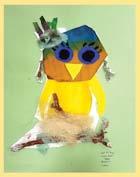
Fine fibrous strings were added at the very last minute to represent the natural habitat of birds.
Students are encouraged to reflect and refine their artworks constantly to create better linkages to their message. In this case, the bird’s nest was an apt way of illustrating the group’s message of “Stop cutting down trees to save the birds.”
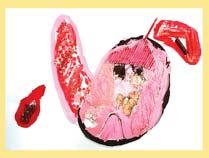
Besides using pearls to mimic the smooth horns of rhinos, students also tapped on other properties of materials to convey their message.“We used pearls because rhinos’ horns are very precious and pearls are very precious.”


These students use a piece of textured cloth that they brought to represent the fur of tigers and to link to their message of stopping people from hunting tigers and other animals for their fur.



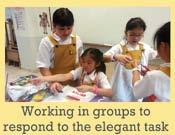
The use of Compass Point strategy as a form of reflection-in-action at the end of Day 2, allows students to reflect on their artwork during the process of making. It gets them to think about the feasibility of their ideas and reshape what they are working on.
Compass Point strategy
What is one thing about your artwork that you: are Excited about? are Worried about?
Need to find out more to improve on it? can Suggest an improvement for?

At the end of Day 3, students were encouraged to be reflective individuals as they record their feelings and thoughts to better understand themselves and their art making processes through a group feedback and an individual reflection. In the group feedback, each group was paired up with another group to share about their artwork and the messages and or emotions their textures express. Each group then wrote their feedback for the group that had presented.
My Personal Reflection
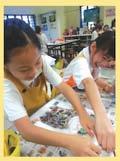

I was very heartened and excited to see my P3 students lead discussions and justify their choices of textures. Their voices were also clearly reflected in their unique artworks. Areas of improvement - (1) Spend more time on discussing and experimenting on visual textures as very few groups chose to do that. (2) Improve on my questioning techniques to delve deeper into students’ thinking, as well as to engage them in sustained inquiry and extended thinking.

MS GRACE KWA PROGRAMME MANAGER (ART), STAR
The Art STAR Champions (Primary) programme has been one of STAR’s significant structured professional development programmes since 2011. STAR Champions are teacher-leaders nominated by Cluster Superintendents, with the support of their Principals, to propagate good art practices and enhance teacher competencies in the art classroom. STAR Champions are acknowledged for their leadership potential, and dedication and passion towards the subject discipline.


Through careful planning of workshops at STAR, about 55 Art STAR Champions come together each year to learn, grow and inspire. With workshops ranging from enhancing one’s student-centred art teaching and learning repertoire to honing one’s art-making skills, the learning space is dynamic and further enriched by the diverse experiences and deep conversations the STAR Champions bring into the knowledge sphere.
A crucial component of the programme is to revisit and redefine personal beliefs about the purposes of art education. After all, our beliefs predetermine our actions – one’s view of the purposes of art education would inevitably influence the way one teaches and shape one’s expectations of the students.


Through discussions and personal reflections, many STAR Champions opined that the holistic development of children through art is fundamental as the subject offers ample opportunities for socio-emotional learning through self-expression and collaborative work, as well as the development of 21st century competencies such as Critical and Inventive Thinking Skills through ideas generation, problem-solving and exploration of art materials and techniques etc.
I always see the importance of art education in the holistic development of a child. Through art education, children pick up motor skills and visual-spatial skills, improve their language when they talk about art, and learn to express themselves through art making. The process of making art brings together the diverse elements of the children’s experiences to make a new and meaningful whole. – Mdm Julie Abdullah, Pei Tong Primary School
Art Education to me is a good way of allowing people to understand the world around them and it builds capacity to express ideas, feelings and emotions. – Mrs Jess Low, Haig Girls’ School
Many echoed the sentiment that art education is way beyond driving skills and art production, and its endeavour ought to be much broader than nurturing individuals for art-related industries in the future.
In the workshops panned out for these Champions, the central focus is on enhancing one’s ability to deliver student-centred art lessons. Designing of ‘Elegant Art Task’, scaffolding art discussions and facilitating students’ creativity and reflections are common topics embedded in the workshops.
Through the programme, the Champions were equipped with a deeper understanding of student-centred pedagogical approaches and this resulted in some of the following improved art teaching practices:
• Careful planning of lesson units to ensure it is relevant and meaningful
Rather than focusing on art lessons in isolation, with an art product at the end of every lesson, Champions work towards a coherent lesson unit which may consist of 5-8 lessons supporting activities put in place to prepare students to attempt a meaningful performance task.
• Purposeful questioning techniques to develop students’ thinking
My core business in art education is not about training these little ones to be ‘master artists’ in primary schools but to educate the next generation to be ‘visually literate' so that they recognise the value of art and learn to appreciate the fine things in life.
– Mdm Lem Li Kuen, Zhenghua Primary School
Not all my pupils will become artists in the future but ALL can benefit and enjoy through the process of art making. – Mrs Amy Khoo, Montfort Junior

Strategies in the ‘Let’s Talk About Art’ Teaching Kit had been used extensively in this programme. In 2014, Prof Terry Barrett also conducted a session on the use of selected Artful Thinking routines especially for the Champions.
Most Champions found the Artful Thinking routines accessible and useful in making students’ thinking visible especially during art discussions. While routines like ‘I see I think I wonder’ may seem overly structured at first; it encourages students to develop thinking dispositions where one’s interpretations and opinions are built on careful observations. Over time, students are 17



able to substantiate their responses without necessarily having to follow the routine rigidly.
mid-point self-assessment tool for students to improve on their art pieces.
The other routine ‘Circle of Viewpoints’ also proved popular with the students. Especially useful in artworks where there are multiple characters and a strong narrative, students deepen their understanding of the work by exploring the various perspectives these characters might have.
Champions are more mindful of allowing scope for exploration amidst enabling constraints, as opposed to step-by-step instructions which often results in students producing almost similar end products. Also by designing performance tasks that are contextualised to students’ experiences, every artwork has the potential to tell an individual story, expressed through a child’s eyes. Confident personal responses are not built overnight and exploration is not synonymous to unstructured free play. Nurturing a child’s voice through art involves careful planning and facilitation on the teacher’s part to ensure art experiences translates to meaningful learning.
• Facilitating students’ reflection on art processes rather than over-emphasis on art products
In the past, the Champions’ understanding of students’ reflection was often limited to a ‘show-and-tell’ session at the end where students share about their art products. Through the workshops, Champions realise that reflection can happen at any point of the artmaking process, even serving as a form of
Questions such as:
What are some challenges you face? How can you overcome these? What help or information might you need?
Allow students to articulate the difficulties they encounter while challenging them to think of possible solutions. It encourages them to think of the kind of extra help they might require from the teacher rather than waiting to be spoon-fed with answers.
Questions can also be crafted specifically to guide students’ reflection on new art media or techniques. For instance:
What have you discovered about this medium/technique/ material? How are you going to use the materials? Which techniques would you adopt and why?
These questions also remind students to be more sensitive as they explore materials so as to understand their properties better and to use them more effectively in the process.
Apart from championing change and improvement in their own art classrooms and schools, these Champions also advocate a teacher-led and collaborative culture within the art teaching fraternity by sharing best practices with fellow art colleagues in their respective zones via a pedagogical exhibition and a series
of mini-workshops where participants engage in art-making by exploring various art materials and techniques through varied student-centred pedagogies.


Pedagogical exhibitions emphasise the art processes, rather than students' final artworks. Instructional strategies used are documented, alongside students' responses and teachers' own reflection for improved practices in future. This information is organised, and selectively shown in a meaningful way, offering the reader a glimpse into the STAR Champions’ classrooms. For the reader, these exhibits allow one to see what is possible and reflect on possible extensions and applications in his/her own classroom. For STAR Champions, this is an opportunity to take stock and reflect on one’s lesson unit design as part of professional growth, and contribute to an open culture of learning and sharing.
I was very excited by the pedagogical exhibition; it was firstly meaningful to myself. It created a personal lens in which I could reflect on myself as an art educator. – Mdm Mohamed Hanifa Nazrin, Chongfu School
On the role of art advocacy, the Champions summed up succinctly the 3 areas they could look into to act on this role – in class, in school and in the community. In class, a teacher’s ownership in his/her professional development signals a pursuit for one’s continuous improvement as an educator, ensuring that students are always receiving quality art education. It is also important to safeguard the curriculum time allocated to one’s subject to ensure students reap the full benefits of the art curriculum and to stand firmly by the message to others, be it colleagues, students or parents, that art is not a subject of secondary importance to others.

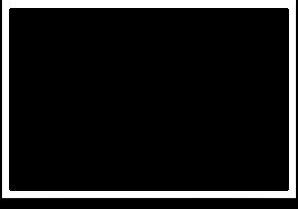
I have seen myself growing into a more confident art educator. Opportunities given to reflect on my lessons allow me to work on my areas of improvement. The cascading workshops helped develop my pedagogical knowledge as well as my confidence in facing and addressing a group of people. Through my sharing at the pedagogical exhibition, some teachers could relate to the lesson and were thankful for the quick tips and strategies highlighted. – Mdm Aliah Hanim, Queenstown Primary School
I believe it is also my responsibility as an art educator and practitioner to learn continuously in terms of pedagogies and art making skills. – Mrs Tan Ee Peng, St Hilda’s Primary School
As an art teacher, I must ensure, at the very least, that my allocated periods are not ‘hijacked’ by others. – Ms Chua Lee Beng, St Anthony's Canossian Primary School
In school, a teacher can share information and work together with his/her colleagues to encourage improved practices in the art classrooms. But beyond sharing and running of workshops, advocacy is also about walking the talk and being the active change agent that effects positive changes through role-modelling.
By keeping track of my professional development, I can be a positive role model to my peers as well as share new discoveries and learnings with my other art colleagues. –Ms Maria Leah Fonseca, CHIJ Kellock (Primary)
I strive to walk the talk and work hand-in-hand with my art teachers to implement student-centred art lesson in my school. – Mrs Fiona Poh, Ngee Ann Primary School
In community, one can find opportunities to inform and educate others about the role of art education.
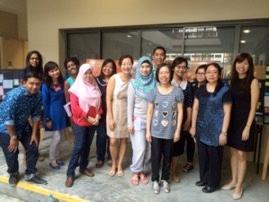

There are many people outside and inside the educational institutions who think that art is of low value. Through my conversation and role-modelling as an art teacher, I hope to change such thinking in some educators, that art is not a mindless activity for relaxation. People should be informed and have the appropriate awareness and respect for art education. As a HOD, I need to be more reflective in my validation of the art curriculum in the school so that art stays relevant in the present and future. Focusing on quality art teaching in the classrooms is the key enabler to quality art experience for the child. – Mrs Yan Chuat Tong, Compassvale Primary School
To sum it up, the children we teach today will be our best art advocates of tomorrow if they receive meaningful art learning experiences in schools. While most may not end up being in art-related fields, they could vouch for the benefits of art education having taught them to explore possibilities and experiment with alternatives, to consider issues from different perspectives, to reflect on one’s working processes, to observe, to think critically, to be self-aware, and to communicate effectively.




While the learning and takeaways from the STAR Champion has been rich, the Champions would not hesitate to add that it is the friendships and bonds forged through the process that made the journey most meaningful. Professional growth is enriched by conversations and interactions with like-minded people and there is indeed strength in unity. One’s strive for improvement is enthused by the passion shared and sense of support felt as a fraternity – a powerful reminder that one is not alone in the journey towards better art education.
MS TANG HUI JING PROGRAMME MANAGER (ART), STAR
A is for Art, a professional development programme for art teachers, is organised by STAR in partnership with the Asian Civilisations Museum (ACM). It aims to introduce participants to object-based pedagogy in art teaching, and allow students access to local cultures through the study of museum objects in their art lessons.

Back for its 3rd run in 2013-2014, the programme, themed “Earth, Water, Fire” focuses on the study of ceramics, the use of active looking strategies in the museum, and the practice of reflective journaling. Over 50 teachers from 30 primary and secondary schools took part in the 2-year programme, which included a 42 hour course on basic ceramics skills and glaze theory with Master Potter Mr Chua Soo Kim; and a 1.5 day camp at ACM learning to use museum artefacts for their art lessons. Following which, they designed and implemented a lesson package with their own students to apply their learning. The programme culminated in a public exhibition of teacher and student works at ACM from 29 Aug – 26 Oct 2014.



Participants gave feedback that the ceramics sessions have built their confidence as teachers and artists, as they broadened their understanding of ceramics as an art form and translated their learning to classroom teaching.
“... with time and practice, the sessions with Mr Chua became more satisfying as I saw a growth in my confidence and abilities…” – Mdm Ching Yuk Ling, Fairfield Methodist Primary School
“Ceramics made my students more engaged, more confident and more reflective… I have become an art educator who use ceramics as a tool to develop their confidence and tenacity…”
– Ms Sumathi Supramaniam, Teck Ghee Primary School
“Through the lessons, I see my pupils opening up and talking happily about their works and their friends’ works. There is neither a sense of inhibition nor fear of failure.” –
Mdm Wong Ching Ching, Admiralty Primary School
The task to design and implement a lesson package that includes a museum-based lesson has helped teachers become more confident in their use of museum resources for art lessons.


“For my pupils and I, museum visits are no longer a chore. Visiting with an open mind and imagination will bring about more fun and excitement, and in turn, make the visit more valuable and educational.” – Mdm Jennie Teo, Greenwood Primary School
“I got to exchange notes with many teachers from other schools who have shared selflessly about their schools’ art and ceramics programmes. With the knowledge acquired, I have gained a deeper understanding of how to teach, and what to teach for ceramics. Incorporating a museum visit has become an enriching experience for the students.”
– Ms Hayati Manshor, Loyang Primary School
STAR Academy Principal, Mrs Rebecca Chew, delivering her speech at the A is for Art Awards Ceremony



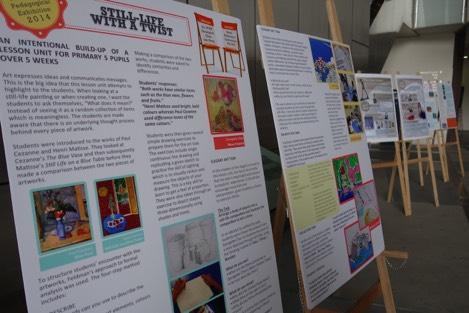
For art teachers by art teachers: A glimpse into the classrooms of art teachers through the STAR Champions (pri) pedagogical exhibits.

was an energetic afternoon of songs, cheers, and applause as our teacher-leaders gathered to reflect on their leadership journey and celebrate their learning. The event recognises the accomplishments and contributions of our teacher-leaders who have worked alongside STAR to build a community of excellent arts educators. In her Opening Address, Academy Principal, Mrs Rebecca Chew congratulated the teacher-leaders on their learning journey and the impact that they have made on the art and music teaching fraternities. In her inspiring speech, Mrs Chew encouraged all to continue to experiment, express and discover in our arts teaching and practices, and to envision the creative space that we are creating for the contemporary Singapore. Mrs Chew also urged all to hear our heartbeats, follow our passion, and leave behind a legacy of creative contributions!
Thank you teacher-leaders! Without you, there would be no celebration. We look forward to another great year of learning and growth in 2015!


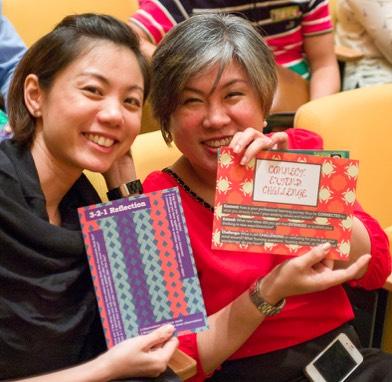
Welcome to Celebracion 2014!
This annual function is designed to thank you for working with STAR to lead the art and music teaching fraternity as teacher-leaders. In your various capacities as STAR Champions, STAR Associates, leaders of Communities of Practice and teacherresearchers, you have helped to lead, care and inspire other teachers, to enhance their teaching in the arts and their own arts practices.
We recognise your courage to direct a path less trodden, your imagination to experiment, reflect and make thinking visible, and passion to carry though your beliefs. We wish you a fruitful time reflecting upon your journey as we celebrate our identity as a fraternity of art and music teachers. Thank you for making a difference in our students through the arts.
Mrs Chua Yen Ching Deputy Director-General of Education (Professional Development)

Top: Inter-level conversation - Our Senior Teachers, (L-R) Mr Tang Li Jen (Victoria JC), Mr William Tock (Siglap Sec), Mrs Jane Grosse (Rosyth School) and Mdm Maziyan Bte Abdullah (Sembawang Sec) viewing the pedagogical exhibits put up by 8 primary school art teachers.
Bottom-left: Find your internal compass, let it be the light to guide you! A token of appreciation from Mrs Chua Yen Ching to all teacherleaders.
Bottom-right: Joyful reflection! Our STAR Champions (pri), Ms Maggie Tan and Mdm Ivy Chua, reflecting on their leadership journey using the thinking routines “3-2-1 Reflection” and “Connect-ExtendChallenge”.

MDM LEE GIM FANG ART TEACHER, LIANHUA PRIMARY SCHOOL
In the previous issue of STAR POST, Miss Tan Wei Ling discussed the key learning points from her creative journey of exploration and discovery as she prepared for the Art Teacher Practitioner Programme (ATPP) art exhibition. In this issue, Mdm Lee Gim Fang shares her thoughtful reflection on the insights that she has gleaned from the ATPP reading materials. While some readings have affirmed her belief about art and art education, others have provoked wonder and inspired thought.
Reflecting on my ATPP course journey, it was filled with new insights, experiences and knowledge which helped me to gain more confidence and clearer perspective on my role as an art educator.
Art is different yet similar to other subject disciplines. Mathematics has its fair share of formulas, fraction, ratio, algebra, while English is over-flowing with grammar, vocabulary, adverbs and structures. As for art, it is also packed with art vocabulary, techniques and skills. However art functions differently from the rest of the subject disciplines. In one of the readings, “What does Art do for People”, I came across this paragraph: “Art is said to be both pleasurable and advantageous because it is therapeutic: it integrates for us powerful, contradictory and disturbing

feelings (Stokes, 1972; Fuller, 1980); it allows for escape from tedium or permits temporary participation in a more desirable alternative world (Nietzsche, 1872)”. I agree with the statement. Art is not about finding answers for your typical Mathematics problems or your English grammar test. Art is about embarking on a journey in which you learn to explore and experiment, and at times, you will be surprised by your unexpected discoveries. In the process, you exercise your analytical skills, observation skills, self-expression, creativity and emotional reasoning to create your artwork based on your interpretation. Similar to other subject disciplines, to master any art technique requires one to undergo rigorous practices. I can solve many Mathematics problem sums or English grammar test by memorizing, and doing endless practices by applying the theories and concepts conscientiously. One cannot be considered an accomplished artist simply by doing many pieces of art. Art encourages us to make use of our personal experiences and understanding to arrive at our interpretation. At the same time, it transforms one’s thinking and perspectives at different stages of art making. It is a process of self-discovery and exploration, as what Pablo Picasso once said, “I do not seek, I find.” This describes what art learning is about.
Thus, it is pertinent that as art educators, we must be clear on how we should approach art teaching for our future generations, and not just follow blindly any formulas and art techniques without showing our pupils how to link art with the real world.
One of the readings “Making Links” raised several important points about art education. Rob Barnes’ “Teaching Art to Young Children 4 – 9 (2nd Edition) mentioned that for children, art can be a means whereby they reconstruct and assimilate the experiences they have. As educators, we would want to know if our pupils are really learning anything. Often, we may think that our art lessons are successful when our pupils are able to reproduce the artwork as instructed. Children who are enjoying their artwork, managing what they have been assigned and able to control materials do not necessarily give us clear indication that they have really learnt the lesson that we have taught. To ensure our pupils are able to do more in their artwork, rather than just copy
Art is about embarking on a journey in which you learn to explore and experiment, and at times, you will be surprised by your unexpected discoveries. ~ Gim Fang

that it promotes their learning, besides just being enjoyable. To me, a successful art teacher should discover ways of developing one’s own ideas rather than just copying from teachers we see around us. Thus, it is important to gain sufficient understanding of art teaching to know what we are looking at and assess if anything is being learned by the child. What is drawing?
As a young child, I enjoyed doodling and drawing. I recalled drawing houses, forests and clouds during my Primary 2 year, and drawing was an activity I looked forward to every week. As I grew up, with fewer opportunities for drawing, drawing became very challenging for me. During my ATPP course, while doing my best to learn as much as I could, I realized my lack of exposure to observation drawing has made my whole learning process more challenging. After attending the drawing course in ATPP, my drawing techniques improved vastly from a flat 2D drawing portrait to a realistic portrait of myself. As each drawing lesson progressed on, the challenges grew and my observation became sharper. I have asked myself, if my pupils face similar challenging situation like me in terms of drawing, what teaching practices can I implement in my school to help them manage those challenges? Next question was, with the latest technology, Apple i-phone, Samsung, Canon camera, why is there still a need to draw when people have easier and simpler alternatives to capture images? What is the purpose of drawing? How can drawing extend the pupils’ learning in their course of art making?

As adults, we need to provide art experiences that will enhance the child’s developmental journey. To offer the most appropriate art experiences, it is important to understand the art behaviors of our pupils. I believe that the four ground rules stated in the child art development model would guide art educators in their lesson planning and delivery.
To answer my questions, one of the readings, “How Young Artists Grow” gave me new perspectives in drawing for young children. It addressed several issues on children’s artistic developments. It was pointed out that drawing is important, because it is a tool with which to think and communicate. As the United States Department of Education states, “Children who are encouraged to draw and scribble ‘stories’ at an early age will later learn to compose more easily, more effectively, and with greater confidence than children who do not have this encouragement” (1986, p. 14).
First rule, we must set realistic expectations. We must accept the scribbler’s approach to drawing as being just as valid and important as the more adult-pleasing graphic symbols. Second rule, we should value child art as a developmental process and not as a product. Teachers must find ways of recording and presenting not just the product but also the child’s art making process. Third rule, we must understand better what the child is thinking; and the fourth rule, we should select activities that are suitable for particular children, and these activities should be open-ended and allow room for exploration as well as symbol production.
To conclude, it has been an enriching learning journey which left me wanting to learn more, see more, and experience more about art. There are still many things I have to learn in order to improve myself and develop to become a better art educator.
by Elliot Eisner

Mdm Lee Gim Fang shared with us what she has learnt about the value of the arts, Elliot Eisner also listed ten key lessons that the arts teach. What are your thoughts? What has the arts taught you and your students? Write to us to share your views. Refer to page 35 for writing guidelines.
Photo shows artwork: In search of the green-city in me (2013-2014) MDM NORLITA MARSUKI Orchid Park Secondary School

4. The arts teach children that in complex forms of problem solving purposes are seldom fixed, but change with circumstance and opportunity. Learning in the arts requires the ability and a willingness to surrender to the unanticipated possibilities of the work as it unfolds.
5. The arts make vivid the fact that neither words in their literal form nor numbers exhaust what we can know. The limits of our language do not define the limits of our cognition.
6. The arts teach students that small differences can have large effects. The arts traffic in subtleties.
10. The arts' position in the school curriculum symbolizes to the young what adults believe is important.
SOURCE: Eisner, E. (2002). The Arts and the Creation of Mind, In Chapter 4, What the Arts Teach and How It Shows. (pp. 70-92). Yale University Press. Available from NAEA Publications. NAEA grants reprint permission for this excerpt from Ten Lessons with proper acknowledgment of its source and NAEA. - See more at: http://www.arteducators.org/ advocacy/10-lessons-the-arts-teach#sthash.dBKD2sD4.dpuf
MISS XIE SHANGYI ART TEACHER, NANYANG GIRLS’ HIGH SCHOOL
In this essay, Miss Xie Shangyi, a beginning teacher who started her teaching career in July 2013, shares her experience as a teacher-artist at the a-edge art exhibition this year.
Art is a practice, and to teach art without practising it will be just empty talk.
The best way to inspire students is to walk my talk, and hence my decision to take part in the a-edge exhibition organised by STAR this year. It was a “crazy” decision and a tough journey I must confess, having to balance between school workload and art making. Being very ambitious and full of ideas, I submitted two collaborative artworks for the exhibition, doubling the challenge for myself.
I chose to do a collaborative work because art making journeys have been lonely and self-indulging in the past. Leaving art school seems to have removed the art community and conversations that surrounded me. Fortunately, with many beginning teachers’ sessions and activities organised by STAR, I have found likeminded teachers from different art backgrounds, and this variety in perspective and skills has created interesting tensions and conversations that resulted in exciting artworks.
It has been a very enriching journey working on my artwork for the exhibition as I

have many ideas sitting in my head, but having no time is always the excuse that shelved these ideas. However, with an exhibition in mind, it forces me to pull those dusty ideas out again and develop the concepts into concrete, resolved outcomes. I realised I have also become more focused and proactive with my time management when the demands from school and art set in.
Seeing me work hard on my personal artwork has also allowed my students to know me as an individual besides just a teacher figure. Students witness a different way of working, one that is not structured by academics, and they are curious to know the concepts behind the work and volunteered to be involved in the process. Unknowingly, I started to have a “factory” of helpers wanting to get their hands involved in the making of my artwork.
Through this precious experience, I have come to understand that while the support received in art school for art making might have ended, I now have a different kind of support as an art teacher. From collaborating with like-minded teacher-artists to the words of encouragement from the school management and colleagues, and the excitement amongst the students who wanted to be involved, I know I am not alone on this journey and that is what keeps me going. It is not going to be easy, but it is definitely worth the hard work, and I look forward to participate in the next a...edge exhibition!

a|edge, an acronym for ‘Art Educators’ Developmental & Generative Explorations’, is an annual art teachers’ exhibition. Since its advent in 2012, the exhibition has been a platform to celebrate the accomplishments of arts educators who seek to hone their artistic and creative skills, and explore the cutting edge of arts practice and pedagogical research.
If you would like to come onboard as an a...edge artist, the opportunity is here! a...edge 2015 is now accepting proposals from teacher-artists. Please refer to page 33 for more information.
Shangyi has also designed lesson ideas derived from her artworks, please visit http:// staraedge.wordpress.com to view the artworks and lesson ideas by Shangyi and other a-edge teacher-artists.

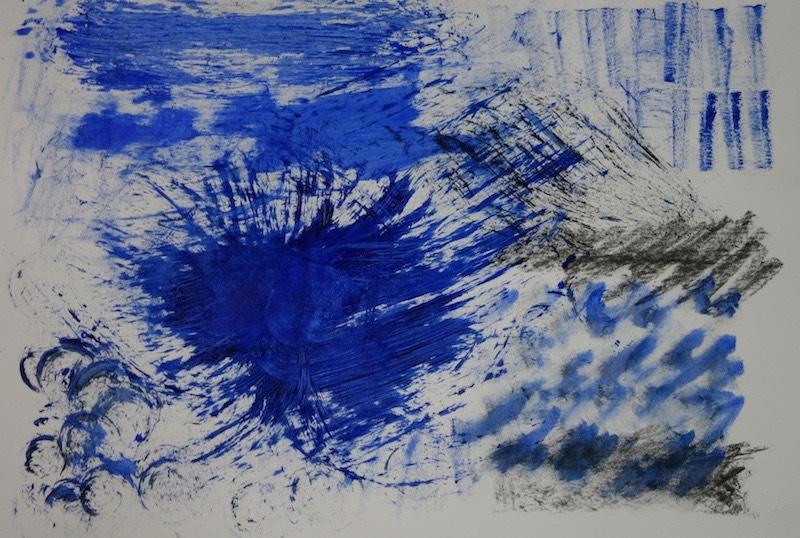



All art teachers, currently serving in MOE and affiliated schools, are invited to participate in this annual art exhibition. Your artworks may take any form and be in any medium – from drawing, painting, photography, sculpture, installation to video art and performance work. Interdisciplinary and collaborative artworks are also welcome.
This exhibition will take place in March 2015 at SOTA Art Gallery.
If you are keen to participate, please submit 2 images and an 80 – 120 word synopsis of your completed/near-completed artwork(s) by 5 January 2015 Details about the exhibition and template for proposal have been sent to all art teachers in our mailing list.
Enquiries: Lee Pheng Guan (Mr) (Lee_Pheng_Guan@moe.gov.sg)
a | edge is an acronym for ‘Art Educators’ Developmental & Generative Explorations’
To view more exhibits from a-edge (2014), please visit http://staraedge.wordpress.com


This symposium centres around inquiry-based approaches to art teaching and learning. Over the course of the symposium, participants will investigate images, artworks and art collections in the context of different museum and gallery spaces. Museum staff and artists will guide teachers with teaching strategies that respond to different student needs, learning styles and prior experiences.
At the end of the symposium, participants should be able to:

• deepen their appreciation and understanding of how the museums and galleries can be used as alternative learning spaces to extend and enrich students’ learning;
• investigate the use of artworks and artefacts as educational resources to support the teaching and learning of art; and
• strengthen their knowledge of inquiry-based approaches to art teaching and learning through studio practices and discussion on art.
Venue: STAR, TPM, SAM, STPI and NUSM; ArtStage at Marina Bay Sands Convention Centre
When: 15, 16, 17 January 2015 (3 full days) and ArtStage
Learning Journey on 22 or 23 January 2015
Registration has ended, and confirmation emails have been sent to applicants.
STAR POST (Art) is an electronically distributed, quarterly newsle;er commi;ed to share ideas, foster a teacher-led culture, and provide professional support for Singapore art teachers.
From Issue 4 (2013), we have decided to feature the following content:
• Cover Story: Big Ideas in Art EducaPon
• Features:
• Research & Case Studies
• Lesson Ideas
• Spotlight on Art Pedagogies/Strategies
• Teachers’ Viewpoints
• Announcements: What’s Up at STAR
• Be yourself, and write in good English.


Do you have an interesting article, lesson idea, or comment to share? Write to us!
Reasons to share:
• Give something back to the fraternity.
• Be an advocate for your own splendid work. We have readers from MOE HQ and professionals in the field.
• PracDse wriDng, and build your professional porFolio in the process.
• Impress you peers (and school leaders too).

• For ar.cles, pick a topic related to an issue close to your heart. This could be a concept you have learnt at work, or from a class you take; an ‘Aha’ moment in an area of concern that had been bugging you for years; reporDng on a research you have conducted; your own approach to art teaching, philosophy, or making. We will be your criDcal friends, and we will walk through the wriDng process with you. Write between 800 - 1200 words and be sure to include good digital photographs
• For lesson ideas, we accept a variety of formats. However, we found that wriDng in prose, explaining the lesson objecDves, describing the lesson sequenDally, including images of students’ work and including a personal reflecDon helps the reader appreciate the lesson best. Write between 800 - 1200 words.
• For comments, feedback, or shower of apprecia.on for another fellow art educator, speak your mind between 50 to 500 words. The editors reserve the right to edit or decide if the text is appropriate for inclusion.
Mr Lim Kok Boon Programme Director (Art)
Ms Tang Hui Jing Programme Manager (Art)
Mdm Ira Wati Sukaimi Programme Manager (Art)
Mr Lee Pheng Guan Programme Manager (Art)
Lim_Kok_Boon@moe.gov.sg
6664 1502
Tang_Hui_Jing@moe.gov.sg
6664 1550
Ira_Wati_Sukaimi@moe.gov.sg
6664 1546
Lee_Pheng_Guan@moe.gov.sg
6664 1545


Mdm Victoria Loy Master Teacher (Art)
Ms Grace Kwa Programme Manager (Art)
Mdm Chun Wee San Programme Manager (Art)
Ms Tan Bee Ngoh Programme Executive
6664 1549 STAR: A home for art & music teachers
Victoria_Loy@moe.gov.sg
6664 1551
Grace_Kwa@moe.gov.sg
6664 1547
Chun_Wee_San@moe.gov.sg
6664 1552
Tan_Bee_Ngoh@moe.gov.sg

